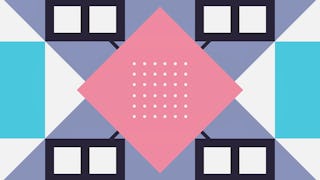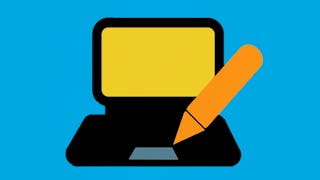A blank canvas is full of possibility. If you have an idea for a user experience, how do you turn it into a beautiful and effective user interface? This covers covers principles of visual design so that you can effectively organize and present information with your interfaces. You'll learn concrete strategies to create user interfaces, including key lessons in typography, information architecture, layout, color, and more. You’ll learn particular issues that arise in new device contexts, such as mobile and responsive interfaces. You will learn how to apply these design principles in a modern context of increasingly diverse form factors - from tablets, to walls, to watches.

Gain next-level skills with Coursera Plus for $199 (regularly $399). Save now.

Information Design
This course is part of Interaction Design Specialization

Instructor: Scott Klemmer
32,185 already enrolled
Included with
(578 reviews)
Skills you'll gain
Details to know

Add to your LinkedIn profile
See how employees at top companies are mastering in-demand skills

Build your subject-matter expertise
- Learn new concepts from industry experts
- Gain a foundational understanding of a subject or tool
- Develop job-relevant skills with hands-on projects
- Earn a shareable career certificate

There are 3 modules in this course
So you’re ready to lay out an interface. Don’t jump into code just yet. Rapid prototypes help you figure out the look and feel of an interface quickly, before you start implementation. In this week, I’ll introduce both principles and software tools for effective pixel prototyping. These rapid prototypes for communication within a design team and for getting buy-in from stakeholders. If you walk into any design studio, you’ll likely see these fast prototypes adorning the walls. Now you can add your own to the mix.
What's included
3 videos1 reading1 peer review1 discussion prompt
There’s more than seven billion people on the planet, and just about that many computing devices. Given that scale and diversity, interface design can’t be one-size-fits-all. In this module, we’ll dive into the rationale and strategies for making designing interfaces more flexibly. We’ll talk about internationalization--i18n for you wonks and 1337 h4x0rs--and the interplay between script direction and interface layout. And we’ll discuss responsive design: having a ‘family’ interface strategy that grows, shrinks, and changes to accommodate a range of device form factors.
What's included
4 videos1 reading1 peer review1 discussion prompt
In this lecture, you will learn how to design smart things. Visualization expert Ben Fry will discuss what it means to design with usability in mind.
What's included
2 videos1 reading1 assignment1 peer review1 discussion prompt
Earn a career certificate
Add this credential to your LinkedIn profile, resume, or CV. Share it on social media and in your performance review.
Instructor

Offered by
Explore more from Design and Product
 Status: Free Trial
Status: Free TrialCalifornia Institute of the Arts
 Status: Free Trial
Status: Free TrialUniversity of Colorado Boulder
 Status: Free Trial
Status: Free TrialUniversity of California San Diego
 Status: Free Trial
Status: Free TrialCalifornia Institute of the Arts
Why people choose Coursera for their career




Learner reviews
578 reviews
- 5 stars
66.60%
- 4 stars
21.97%
- 3 stars
6.22%
- 2 stars
3.28%
- 1 star
1.90%
Showing 3 of 578
Reviewed on Jul 29, 2017
Fantastic. Very good teacher. I found it immensely useful to see him work through examples in real time. I feel this has been the best course I have done in a VERY long time. Highly recommended
Reviewed on Nov 29, 2016
Assignments were good practice but otherwise lectures were very thin.
Reviewed on Mar 14, 2019
Very useful design principles and exploration for the different form factors

Open new doors with Coursera Plus
Unlimited access to 10,000+ world-class courses, hands-on projects, and job-ready certificate programs - all included in your subscription
Advance your career with an online degree
Earn a degree from world-class universities - 100% online
Join over 3,400 global companies that choose Coursera for Business
Upskill your employees to excel in the digital economy
Frequently asked questions
To access the course materials, assignments and to earn a Certificate, you will need to purchase the Certificate experience when you enroll in a course. You can try a Free Trial instead, or apply for Financial Aid. The course may offer 'Full Course, No Certificate' instead. This option lets you see all course materials, submit required assessments, and get a final grade. This also means that you will not be able to purchase a Certificate experience.
When you enroll in the course, you get access to all of the courses in the Specialization, and you earn a certificate when you complete the work. Your electronic Certificate will be added to your Accomplishments page - from there, you can print your Certificate or add it to your LinkedIn profile.
Yes. In select learning programs, you can apply for financial aid or a scholarship if you can’t afford the enrollment fee. If fin aid or scholarship is available for your learning program selection, you’ll find a link to apply on the description page.
More questions
Financial aid available,
¹ Some assignments in this course are AI-graded. For these assignments, your data will be used in accordance with Coursera's Privacy Notice.

